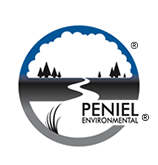Bleach is commonly used to remove and fight mildew found in shower stalls, so it isn’t uncommon for people to think that bleach can also be used to fight mold. Mold on a porous surface like wood or sheetrock, however, is different from the mildew in your shower.
When mold grows on porous surfaces like wood, it grows in colonies. Much like a tree growing, mold grows its roots deep into the pores of the surface. Bleach doesn’t not penetrate the surface and will not get into the pores as needed. While mold grows, the moisture causing the mold continues to travel throughout the place it has started to grow. Moisture will have already made itself at home, and the mold has not reached that point just yet. So you may think that you removed mold successfully, however; you have only removed the upper layer of mold. The remaining mold ends up growing back stronger, deeper and more widely than before. Using bleach is like pruning the branches while feeding the roots.
Here are some facts about Bleach and Mold
- The Clorox ® Company, EPA and OSHA have specifically advised that Bleach should not be used in mold remediation
- Bleach removes the stain caused by mold it does not kill mold
- Bleach could case more mold growth, bleach increases the chances of toxiic mold where it was not present before
- Bleach is a toxic liqoud to be handled with care and just as dangeraous as gasoline
- Bleach can omit a strong odor for at least a week not healthy to inhale
- Bleach applied to wood will push spores deeper into the wood fibers creating more problems later
- Bleach does more harm than good
To successfully remove mold so you don’t have to ever deal with it again, call a professional. For profressional, effective and reliable mold removal in New Hampshire and Maine contact Peniel Environmental Solutions 1-603-541-7979

